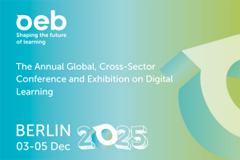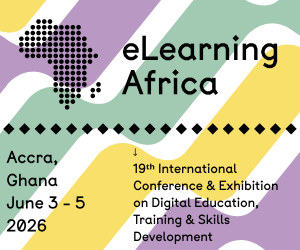The Rise of Vibe AI in Digital Learning
Raleigh, NC (USA), August 2025 - As artificial intelligence reshapes digital education, a new design philosophy is emerging called Vibe Design. This emotionally intelligent approach blends generative AI with human-centred instructional principles to produce deeply engaging, multimedia-rich eLearning experiences. Going beyond automation, Vibe Design enables educators to create content that not only informs but resonates, using AI agents to interpret mood, tone and creative intent. This article explores the rise of Vibe Design across coding, marketing and instructional design, and how platforms like Open eLMS AI are setting a new standard for scalable, aesthetic, and emotionally tuned digital learning.
As artificial intelligence continues to redefine the parameters of design, development and delivery in digital environments, a new paradigm is emerging in the eLearning sector: Vibe Design. This emotionally aware, AI-enhanced approach to content creation combines the latest in generative technologies with a human-centred design philosophy. Its aim is to create digital learning that not only informs but also resonates visually, emotionally and cognitively.
What Is "Vibe" in the Context of AI?
The term "vibe" has rapidly gained traction in AI discourse, describing an abstract yet important quality: the emotional tone or aesthetic intent of a digital product. Unlike traditional design instructions or code-based parameters, "vibe" is communicated through atmosphere, mood and intent.
In practice, AI systems trained on multimodal data (language, visuals, sound, interactivity) can interpret vague, non-linear input such as "make it feel calm and authoritative" or "match the energy of a TED Talk" and generate content that aligns with those emotional cues. This is the essence of Vibe Design, and it is being applied across several domains:
- Vibe Coding – Software development through natural language
- Vibe Marketing – AI-generated campaigns with brand-aligned creative tone
- Vibe Design – Instructional content creation powered by AI-driven multimodal synthesis
Vibe Coding and Natural Language Interfaces
Vibe Coding is perhaps the most foundational pillar. Leveraging large language models (LLMs), users can now describe an app’s functionality in plain language and receive working prototypes, complete with interfaces, business logic and documentation. The coding layer becomes invisible, abstracted away by intelligent systems trained on vast software corpora.
This signals a potential transformation of the programmer role. Rather than writing code, future professionals may instead articulate problems and constraints in natural language, allowing AI agents to handle implementation autonomously.
Vibe Marketing and Coordinated AI Agents
Marketing departments are seeing similar disruption. Through coordinated networks of AI agents, each simulating the role of a scriptwriter, animator, illustrator or editor, organisations can now produce marketing materials in hours rather than weeks. These agents collaborate under light-touch human supervision, ensuring outputs are coherent, brand-compliant and emotionally tuned to the audience.
It is not automation instead of creativity, but automation in service of creativity. The human role shifts from executor to curator.
Vibe Design in eLearning: A New Creative Standard
Where Vibe Design finds particularly transformative potential is in the eLearning and instructional design domain. The approach, currently operationalised by platforms such as Open eLMS AI, applies emotional and aesthetic intelligence to digital learning environments. It transforms a course from a sequence of slides into a cohesive, immersive experience.
Using advanced natural language processing, computer vision and generative media models, Vibe Design platforms allow users to:
Input a course concept or upload existing materials
Auto-generate narrated videos, visuals, assessments and scripts
Apply consistent tone and aesthetics (for example, formal, humorous, conversational)
Instantly localise and translate for global learners
Edit content live with user-friendly interfaces
Multimodal Intelligence Meets Instructional Design
Unlike traditional eLearning tools that rely on manual design processes, Vibe Design systems use multimodal AI to optimise both the content and the container. Visual design is guided by heuristics developed from UX research and user feedback. Scripts and narration are produced in voices, human or synthetic, that reflect target audience profiles. Interactive elements such as branching scenarios, knowledge checks and quizzes are dynamically adapted to match learner pathways.
The result is digital content that is emotionally compelling, cognitively structured and logistically efficient. It is a leap forward from static presentations or templated SCORM packages.
Technical Considerations and Future Implications
From a technical standpoint, the effectiveness of Vibe Design rests on the integration of several AI subsystems:
- LLMs for text generation and script authoring
- TTS and Voice AI for tone-specific narration
- Generative image and video models for aesthetic visuals
- UX design models trained on instructional design principles
- Autonomous AI agents for orchestration across tasks
The interoperability of these systems is key. Emerging platforms such as Open eLMS AI are not simply embedding AI features into existing LMS workflows. They are rethinking the entire learning design pipeline.
The Human-AI Collaboration Model
Crucially, proponents of Vibe Design emphasise that the goal is augmentation, not replacement. Human learning designers remain in control, curating, editing and ensuring pedagogical integrity, while AI handles repetitive tasks and initial content generation. This "human-in-the-loop" model ensures both scale and quality.
By relieving professionals of the production burden, Vibe Design allows them to focus on what matters: learner outcomes, content relevance and emotional engagement.
A New Chapter for EdTech
As the AI revolution continues to ripple through education technology, Vibe Design represents a new chapter where data-driven intelligence is blended with artistic sensibility. It is not just about learning outcomes, but learning experiences.
For institutions, the implications are significant:
- Reduced production time and cost
- Increased learner engagement and retention
- Easier globalisation of content
- Greater flexibility in instructional formats
For learners, it means education that feels alive, responsive, relevant and beautifully designed.
Vibe Design is more than a trend. It is a clear signal of how AI will shape the future of digital education, not through rigid automation, but through emotionally resonant, human-aligned systems. The next wave of eLearning is not just smarter. It feels better too.









